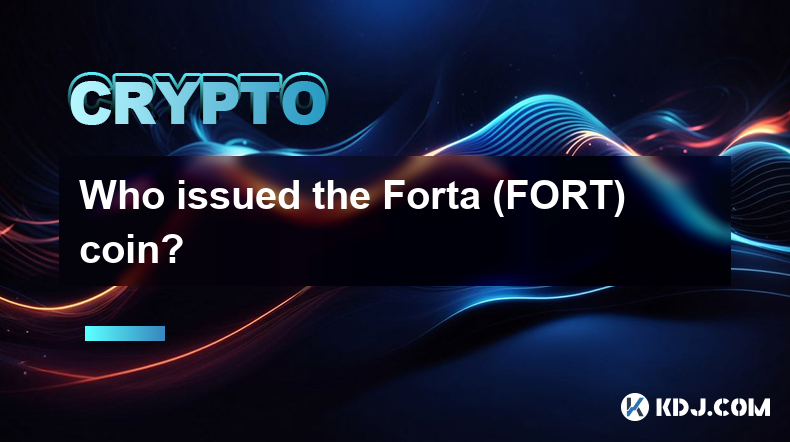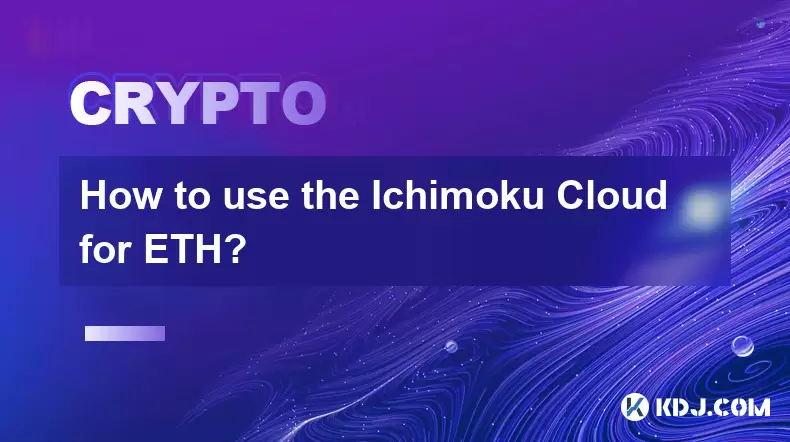-
 Bitcoin
Bitcoin $118900
0.42% -
 Ethereum
Ethereum $3710
-2.88% -
 XRP
XRP $3.513
-2.96% -
 Tether USDt
Tether USDt $1.000
-0.01% -
 Solana
Solana $203.0
3.65% -
 BNB
BNB $765.5
-1.29% -
 USDC
USDC $0.9998
0.00% -
 Dogecoin
Dogecoin $0.2671
-4.18% -
 Cardano
Cardano $0.8817
-3.63% -
 TRON
TRON $0.3139
-0.64% -
 Hyperliquid
Hyperliquid $44.34
-5.45% -
 Stellar
Stellar $0.4637
-4.08% -
 Sui
Sui $3.908
-2.59% -
 Chainlink
Chainlink $19.34
-2.62% -
 Hedera
Hedera $0.2712
-3.77% -
 Avalanche
Avalanche $24.97
-4.13% -
 Bitcoin Cash
Bitcoin Cash $519.8
-1.48% -
 Shiba Inu
Shiba Inu $0.00001518
-3.74% -
 Litecoin
Litecoin $115.6
-2.21% -
 Toncoin
Toncoin $3.460
3.68% -
 UNUS SED LEO
UNUS SED LEO $8.977
-0.07% -
 Polkadot
Polkadot $4.460
-2.96% -
 Uniswap
Uniswap $10.53
-5.43% -
 Ethena USDe
Ethena USDe $1.001
0.01% -
 Monero
Monero $323.6
-0.36% -
 Pepe
Pepe $0.00001379
-2.60% -
 Bitget Token
Bitget Token $4.772
-3.90% -
 Dai
Dai $0.9999
0.00% -
 Aave
Aave $307.5
-6.66% -
 Bittensor
Bittensor $441.8
0.84%
Who issued the Forta (FORT) coin?
The FORT coin, issued by Forta Network, secures smart contracts by incentivizing vulnerability detection, validator monitoring, and governance participation among its decentralized community.
Jan 06, 2025 at 09:16 pm

Key Points:
- History of Forta Network and the FORT Token
- Technological Overview of Forta Network
- How to Acquire FORT Tokens
- Using FORT Tokens to Secure the Forta Network
- Governance and Decentralization Mechanisms in Forta Network
- Potential Benefits and Future Outlook of Forta Network
Who Issued the Forta (FORT) Coin?
The Forta (FORT) coin was issued by the Forta Network, a decentralized blockchain-based platform designed to enhance the security of smart contract systems. The FORT token serves as the native cryptocurrency of the Forta Network, facilitating various functions within the ecosystem, including:
- Incentivizing security researchers: FORT tokens are used to reward researchers who discover and report vulnerabilities in smart contracts.
- Securing the network: FORT tokens are staked by validators who monitor the network for malicious activities and ensure its integrity.
- Governance: FORT token holders have voting rights to participate in the governance of the Forta Network, including protocol updates and strategic decisions.
Technological Overview of Forta Network
The Forta Network operates on a unique architecture that leverages a decentralized network of security researchers and validators. Here's how it works:
- Detection and Reporting: Security researchers scan and analyze smart contracts for vulnerabilities. When a vulnerability is identified, they create detection bots and submit them to the Forta Network.
- Validation and Analysis: Validators review the detection bots and validate their accuracy. Verified bots are deployed to the network, where they continuously monitor smart contracts for potential threats.
- Alert and Notification: If a detection bot identifies a vulnerability or malicious activity, it triggers an alert that is sent to relevant stakeholders, including smart contract developers and network participants.
- Response and Resolution: Developers and platform operators can access the Forta Network's dashboard to investigate alerts, identify vulnerabilities, and take appropriate countermeasures.
How to Acquire FORT Tokens
FORT tokens can be acquired through the following methods:
- Exchanges: FORT tokens are listed on several cryptocurrency exchanges, where they can be purchased using fiat currencies or other cryptocurrencies.
- Staking: FORT token holders can stake their tokens to participate in the network's validation process. In return, they earn rewards in the form of FORT tokens.
- Rewards: Security researchers who contribute detection bots to the Forta Network are rewarded with FORT tokens based on the severity and impact of the vulnerabilities they detect.
Using FORT Tokens to Secure the Forta Network
FORT tokens play a crucial role in securing the Forta Network:
- Incentivizing Detection and Validation: FORT tokens incentivize security researchers and validators to actively participate in the network. Researchers earn rewards for detecting vulnerabilities, while validators are rewarded for ensuring the integrity of the network.
- Staking and Governance: FORT token holders can stake their tokens to participate in the network's governance. They can vote on protocol updates, feature additions, and strategic decisions that shape the future of the Forta Network.
- Protection against Malicious Actors: The FORT token's staking mechanism discourages malicious actors from attacking the network. Validators have a vested interest in maintaining the network's security, as any malicious activity could lead to a loss of their staked FORT tokens.
Governance and Decentralization Mechanisms in Forta Network
The Forta Network employs several governance and decentralization mechanisms to ensure transparency and community involvement:
- Decentralized Architecture: The Forta Network is not controlled by any single entity. It operates on a decentralized blockchain, ensuring that no central authority has unilateral power over the network.
- Open Source Code: The Forta Network's codebase is open source, allowing the community to review, audit, and contribute to the protocol's development.
- Community Governance: FORT token holders can participate in the governance of the Forta Network through voting on proposals. The network's governance structure empowers the community to make decisions that shape its future.
- Transparency and Accountability: The Forta Network maintains a public blockchain that records all transactions and activities. This transparency fosters accountability and trust within the ecosystem.
Potential Benefits and Future Outlook of Forta Network
The Forta Network has the potential to significantly enhance smart contract security and drive innovation in the blockchain industry:
- Improved Security: The Forta Network's decentralized detection and validation机制 provide a comprehensive approach to identifying and mitigating vulnerabilities in smart contracts.
- Reduced Risk: By leveraging a global network of security researchers, the Forta Network reduces the risk of undetected vulnerabilities, protecting user funds and enhancing platform reliability.
- Increased Adoption: As smart contracts become more prevalent, the need for robust security solutions grows. The Forta Network addresses this need, making blockchain technology more accessible and attractive to a wider audience.
In the future, the Forta Network is expected to further expand its capabilities, including:
- Advanced Threat Detection: The Forta Network plans to integrate AI and machine learning techniques to enhance its threat detection capabilities, proactively identifying zero-day vulnerabilities and emerging threats.
- Cross-Chain Support: The Forta Network is exploring ways to extend its security monitoring capabilities to other blockchain platforms, providing a comprehensive security solution for the entire blockchain ecosystem.
FAQs
- What is the use case of the Forta (FORT) coin?
FORT tokens are used for incentivizing security researchers, securing the network through staking, and facilitating governance within the Forta Network ecosystem. - Where can I buy FORT tokens?
FORT tokens can be purchased on cryptocurrency exchanges such as Binance, Coinbase, and Huobi. - What is the maximum supply of FORT tokens?
The maximum supply of FORT tokens is 1 billion. - What is the governance structure of the Forta Network?
The Forta Network is governed by FORT token holders, who can vote on protocol updates, feature additions, and strategic decisions that shape the future of the network. - What are the benefits of using the Forta Network?
The Forta Network provides improved smart contract security, reduced risk for platform operators and users, and increased adoption of blockchain technology due to enhanced reliability and security.
Disclaimer:info@kdj.com
The information provided is not trading advice. kdj.com does not assume any responsibility for any investments made based on the information provided in this article. Cryptocurrencies are highly volatile and it is highly recommended that you invest with caution after thorough research!
If you believe that the content used on this website infringes your copyright, please contact us immediately (info@kdj.com) and we will delete it promptly.
- Telegram Crypto Wallet Lands in the US: A New Era for US Users?
- 2025-07-22 23:30:13
- BlockDAG, XRP Price, AVAX Price: What's the Buzz in Crypto Town?
- 2025-07-22 23:50:13
- Bitcoin DeFi Heats Up: Alkanes, Runes, and the ICP Connection
- 2025-07-22 23:50:13
- Meme Coin Mania: Dogecoin, PEPE, and the Crypto Presale Craze
- 2025-07-22 22:50:13
- Altcoin Rally Alert: Cardano, AVAX, and the Crypto Landscape in June 2025
- 2025-07-22 23:55:15
- Nicotine Pouches: A Sweet Threat to Teens' Gum Health?
- 2025-07-22 22:30:13
Related knowledge

What is Chainlink (LINK)?
Jul 22,2025 at 02:14am
Understanding Chainlink (LINK): The Decentralized Oracle NetworkChainlink is a decentralized oracle network designed to bridge the gap between blockch...

What is Avalanche (AVAX)?
Jul 22,2025 at 08:35am
What is Avalanche (AVAX)?Avalanche (AVAX) is a decentralized, open-source blockchain platform designed to support high-performance decentralized appli...

What is Polkadot (DOT)?
Jul 19,2025 at 06:35pm
Understanding the Basics of Polkadot (DOT)Polkadot (DOT) is a multi-chain network protocol designed to enable different blockchains to transfer messag...

What is Monero (XMR)?
Jul 21,2025 at 10:07am
What is Monero (XMR)?Monero (XMR) is a decentralized cryptocurrency designed to provide enhanced privacy and anonymity for its users. Unlike Bitcoin a...

How to add indicators to Ethereum chart on TradingView?
Jul 19,2025 at 07:15am
What Is an Ethereum Chart on TradingView?The Ethereum chart on TradingView is a visual representation of the price movement of Ethereum (ETH) over a s...

How to use the Ichimoku Cloud for ETH?
Jul 18,2025 at 09:56pm
Understanding the Ichimoku Cloud and Its ComponentsThe Ichimoku Cloud, also known as Ichimoku Kinko Hyo, is a versatile technical analysis tool that p...

What is Chainlink (LINK)?
Jul 22,2025 at 02:14am
Understanding Chainlink (LINK): The Decentralized Oracle NetworkChainlink is a decentralized oracle network designed to bridge the gap between blockch...

What is Avalanche (AVAX)?
Jul 22,2025 at 08:35am
What is Avalanche (AVAX)?Avalanche (AVAX) is a decentralized, open-source blockchain platform designed to support high-performance decentralized appli...

What is Polkadot (DOT)?
Jul 19,2025 at 06:35pm
Understanding the Basics of Polkadot (DOT)Polkadot (DOT) is a multi-chain network protocol designed to enable different blockchains to transfer messag...

What is Monero (XMR)?
Jul 21,2025 at 10:07am
What is Monero (XMR)?Monero (XMR) is a decentralized cryptocurrency designed to provide enhanced privacy and anonymity for its users. Unlike Bitcoin a...

How to add indicators to Ethereum chart on TradingView?
Jul 19,2025 at 07:15am
What Is an Ethereum Chart on TradingView?The Ethereum chart on TradingView is a visual representation of the price movement of Ethereum (ETH) over a s...

How to use the Ichimoku Cloud for ETH?
Jul 18,2025 at 09:56pm
Understanding the Ichimoku Cloud and Its ComponentsThe Ichimoku Cloud, also known as Ichimoku Kinko Hyo, is a versatile technical analysis tool that p...
See all articles

























































































